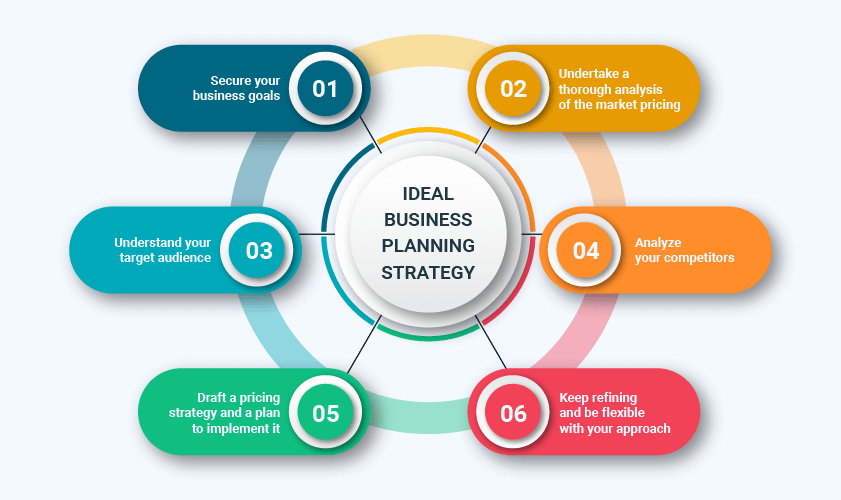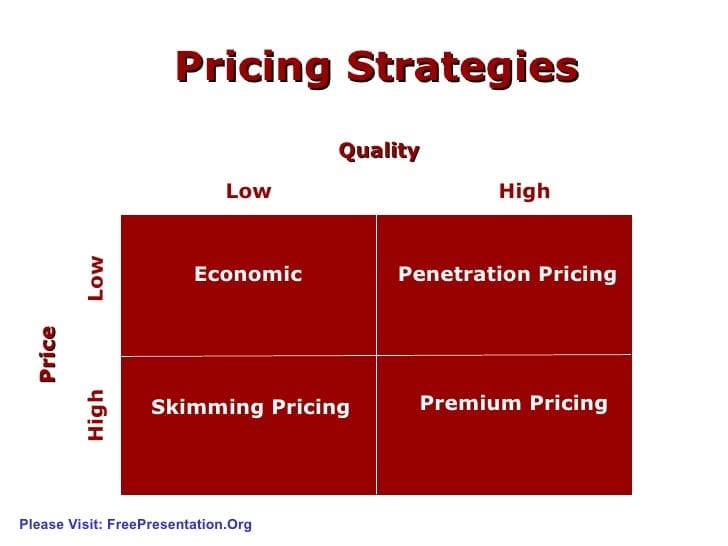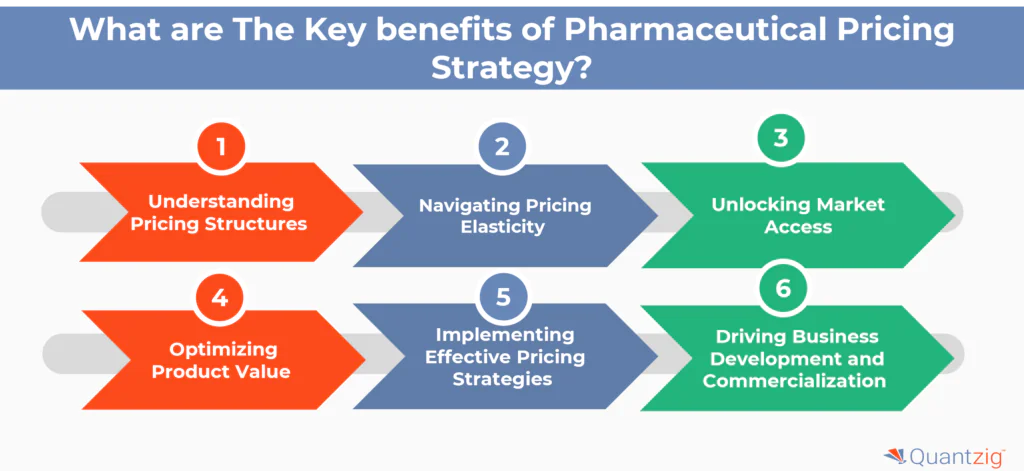Effective Pricing Strategy for New Products: What You Need to Know
Effective Pricing Strategy for New Products: What You Need to Know
Blog Article
Optimize Income With Proven Prices Approach Techniques
In today's competitive industry, the capability to optimize profits through reliable rates methods is critical for continual organization success. Methods such as value-based prices, vibrant rates, and extensive market analysis can considerably boost a firm's financial efficiency. Recognizing customer understanding and leveraging information analytics for dexterous prices changes are vital components of this strategy. Nevertheless, the intricacies of effectively implementing these strategies can pose obstacles that need cautious consideration. Checking out these methods further discloses not only their prospective advantages yet also essential understandings that can reshape your pricing approach.
Understanding Customer Understanding
Understanding client perception is vital for developing efficient rates methods. It affects exactly how customers evaluate a product's value, top quality, and general appearance. Organizations must recognize that consumers commonly base their willingness to pay not solely on the product's intrinsic characteristics but additionally on mental elements, including brand online reputation, social condition, and perceived shortage.

In addition, business should think about the role of prices psychology, such as appeal rates or price anchoring, which can substantially influence consumer behavior. Recognizing these assumptions allows companies to frame their rates methods in a manner that straightens with customer assumptions while making the most of productivity.
Incorporating customer understanding right into pricing approaches not only help in setting affordable costs however likewise cultivates brand name commitment, as consumers feel understood and valued. Inevitably, a nuanced understanding of consumer understanding can lead to sustainable income development and boosted market positioning.
Analyzing Market Trends
To develop an effective rates method, analyzing market trends is essential for organizations wanting to remain competitive. Comprehending the dynamics of market variations enables firms to make enlightened decisions pertaining to rates changes, product launches, and resource appropriation - Pricing Strategy. By keeping track of customer behavior, economic indications, and market advancements, companies can recognize patterns that inform their rates frameworks
Secret components to take into consideration when analyzing market patterns include need flexibility, seasonal changes, and arising innovations. Demand flexibility helps companies evaluate exactly how rate modifications may influence customer acquiring decisions. Seasonal patterns can offer understandings right into optimal prices throughout optimal and off-peak durations, enabling for calculated discounting or promotional rates. Additionally, keeping an eye on technological developments can help identify possible hazards or possibilities that can impact prices strategies.
Using data analytics tools can enhance the precision of trend evaluation, offering useful understandings that help with nimble decision-making. Firms must likewise think about performing regular marketing research to verify assumptions and adjust to evolving consumer preferences. By leveraging these insights, businesses can not only enhance their rates methods yet likewise strengthen their overall market placement, ensuring lasting earnings and development.
Competitive Rates Approaches
A competitive pricing approach is essential for organizations intending to gain a side in a crowded marketplace. By assessing rivals' prices structures and market positioning, companies can purposefully establish their prices to bring in consumers while preserving success. This technique requires a complete understanding of both the competitive landscape and client perceptions of value.
One reliable approach is rate matching, where a business uses to defeat a competitor or match's cost. This technique can enhance customer commitment and motivate sales, especially in price-sensitive markets. Additionally, penetration prices can be employed to capture market share by at first establishing prices less than rivals, tempting consumers to attempt the item and cultivating brand name recognition.
Additionally, companies can carry out mental prices strategies, such as pricing products simply below a rounded number (e.g., $9.99 rather of $10 - Pricing Strategy.00) This can create the perception of a better bargain, influencing consumer habits
Ultimately, a successful affordable prices technique balances the requirement to stay appealing to clients while guaranteeing that the rates model aligns with the company's total goals. Routinely evaluating and readjusting prices in response to market shifts and rival activities is important for continual success.
Value-Based Prices Strategies
Value-based pricing methods focus on establishing rates largely based upon the regarded value of an item or solution to the client, instead of only on production prices or rival prices. This strategy calls for a deep understanding of customer demands, preferences, and the unique benefits that the service or product offers. By determining the certain value chauffeurs that resonate with consumers, companies can develop prices techniques that show truth well worth of their offerings.
To Check Out Your URL carry out value-based pricing effectively, business should take part in extensive marketing research, including customer surveys and focus teams, to collect insights into customer understandings. Furthermore, businesses must sector their customer base to customize prices methods that align with different worth assumptions throughout sections.
Interaction plays a vital role in value-based rates; firms need to articulate the special worth suggestion plainly to validate the rate point. Continuous examination and change are essential, as consumer perceptions of value may change over time due to market dynamics or competitive actions. By prioritizing worth in prices methods, organizations can improve consumer complete satisfaction, boost loyalty, and eventually enhance click here for more profits.
Dynamic Pricing Designs

Dynamic pricing leverages sophisticated algorithms and data analytics to keep an eye on rival rates, customer actions, and inventory levels. By dynamically changing prices, organizations can maximize earnings, make the most of revenue margins, and react promptly to changes in the market. Airlines commonly use this version to readjust ticket costs based on elements like remaining seats, time up until separation, and competitor prices.
However, the application of vibrant prices must be approached with caution. Clear communication with consumers is important to preserve depend on and stay clear of assumptions of unfair prices methods. Additionally, businesses must guarantee that their pricing formulas are not excessively complex or opaque, as this can lead to moved here customer frustration.
Inevitably, when performed attentively, dynamic rates versions can give businesses with a substantial affordable advantage, allowing them to capitalize on market chances while providing to client expectations in a swiftly altering financial landscape.
Verdict

Strategies such as value-based pricing, dynamic pricing, and extensive market evaluation can dramatically enhance a company's financial performance. Seasonal trends can offer understandings right into ideal prices throughout top and off-peak periods, allowing for strategic discounting or marketing rates.Dynamic prices leverages innovative algorithms and information analytics to monitor competitor pricing, client habits, and inventory levels. By understanding customer understanding, analyzing market fads, and applying competitive pricing methods, organizations can successfully straighten their rates with consumer assumptions. In addition, value-based pricing and vibrant pricing designs allow companies to respond agilely to market variations.
Report this page